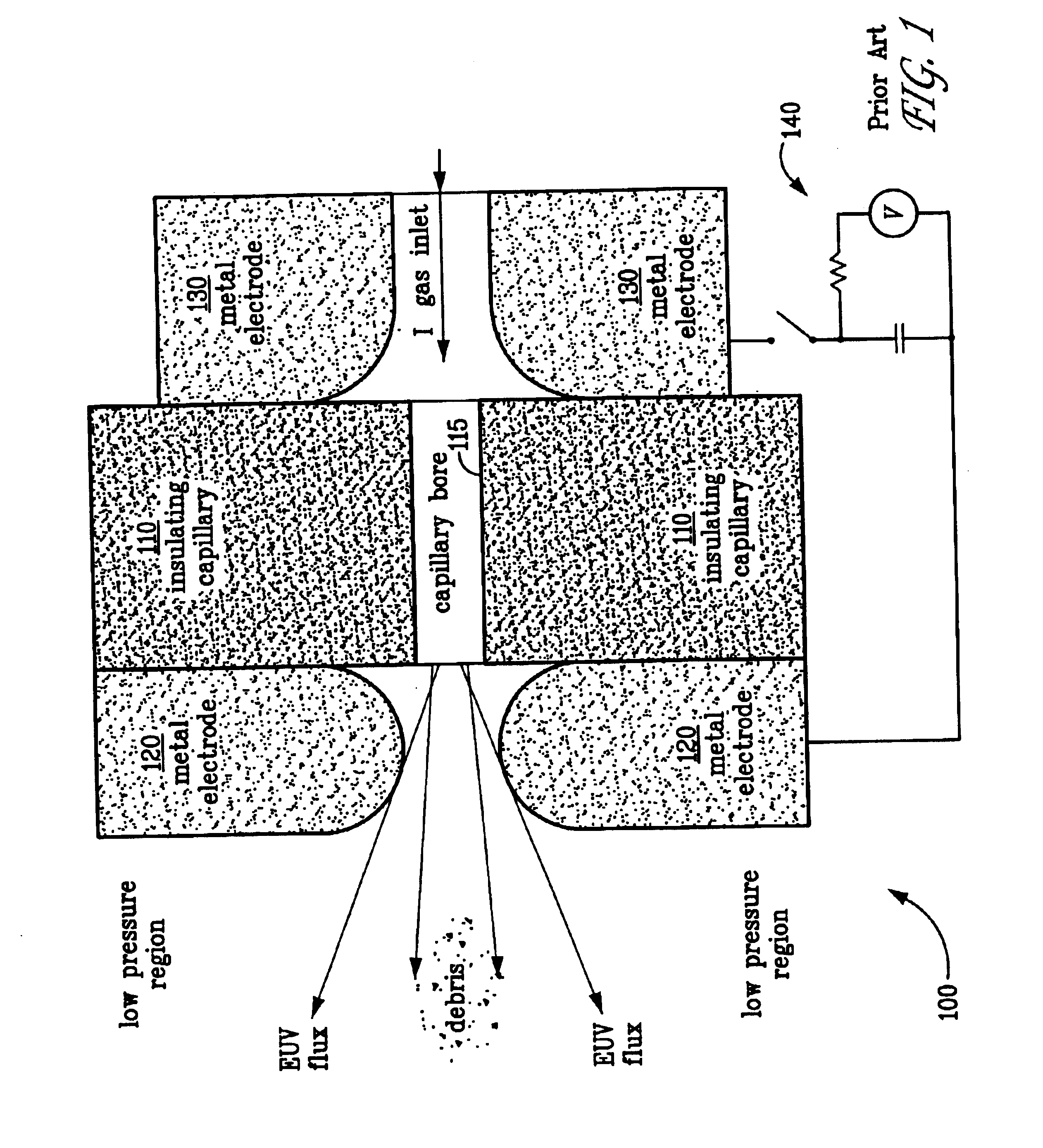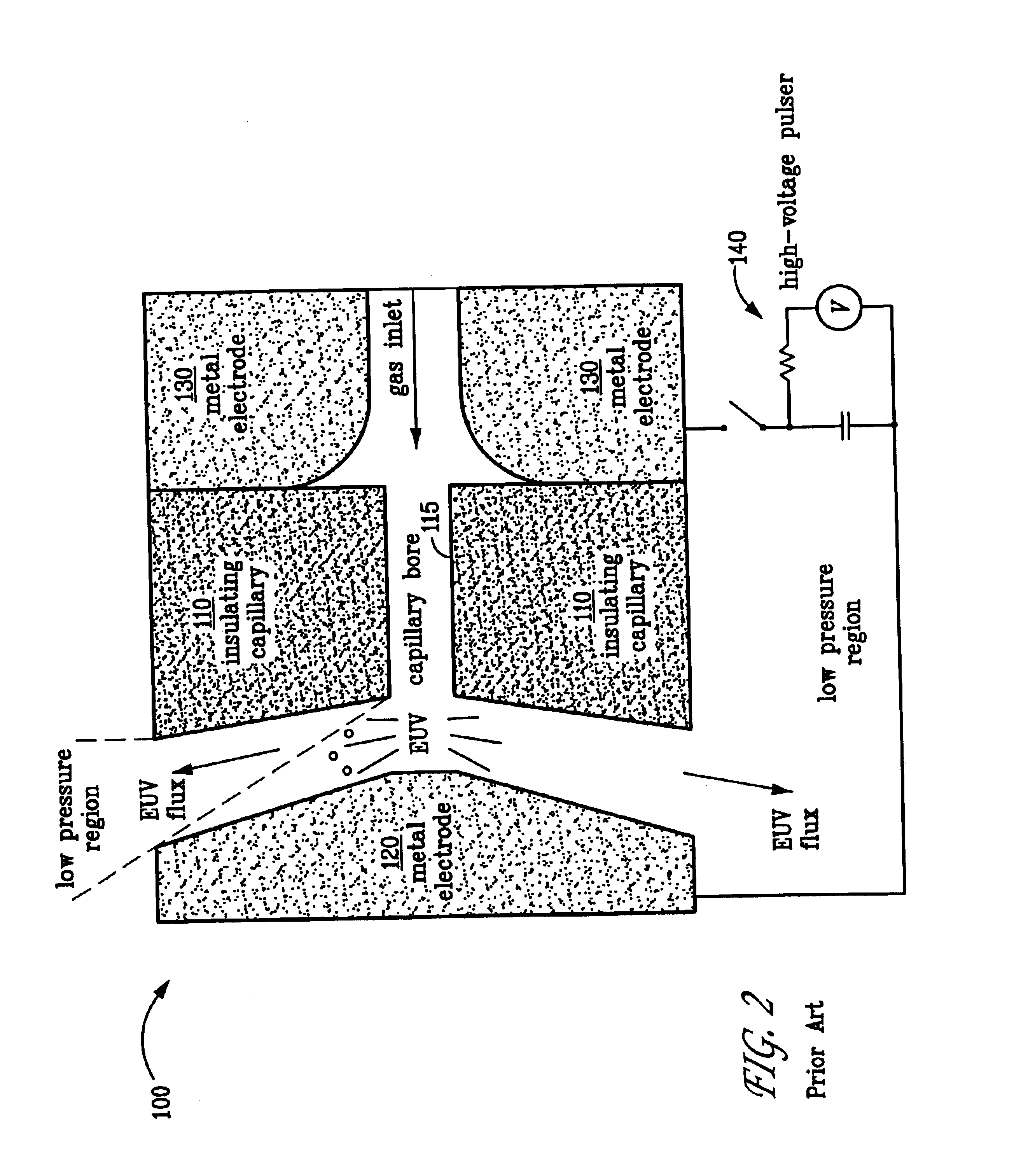Method and apparatus for debris mitigation for an electrical discharge source
a technology of electrical discharge source and debris, which is applied in the direction of optical radiation measurement, instruments, therapy, etc., can solve the problems of lpp radiation generation, cost, and primarily driven by the cost of laser diodes, and achieve the effect of reducing the efficiency of the transport of debris
- Summary
- Abstract
- Description
- Claims
- Application Information
AI Technical Summary
Benefits of technology
Problems solved by technology
Method used
Image
Examples
Embodiment Construction
[0015]The present invention is directed to an improved electrical capillary discharge source, wherein the improvement provides for trapping of debris generated by the capillary discharge source by thermophoretic and electrostatic deposition.
[0016]Referring now to FIG. 3 which illustrates a schematic cross-sectional view of an embodiment of the electrical capillary discharge source 100. As in the prior art discharge source illustrated in FIG. 1, the present electrical discharge source comprises an insulating disc 110, typically fabricated from an electrical insulator material such as a ceramic material, having an axial capillary bore 115, a front electrode 120 and a rear electrode 130, disposed on either side of insulating disc 110, each having an aperture aligned with capillary bore 115. Xenon gas flows through capillary bore 115 from rear electrode 130 to front electrode 120. A high voltage, high current electrical pulse is established across the front and rear electrodes by a sour...
PUM
 Login to View More
Login to View More Abstract
Description
Claims
Application Information
 Login to View More
Login to View More - R&D
- Intellectual Property
- Life Sciences
- Materials
- Tech Scout
- Unparalleled Data Quality
- Higher Quality Content
- 60% Fewer Hallucinations
Browse by: Latest US Patents, China's latest patents, Technical Efficacy Thesaurus, Application Domain, Technology Topic, Popular Technical Reports.
© 2025 PatSnap. All rights reserved.Legal|Privacy policy|Modern Slavery Act Transparency Statement|Sitemap|About US| Contact US: help@patsnap.com



